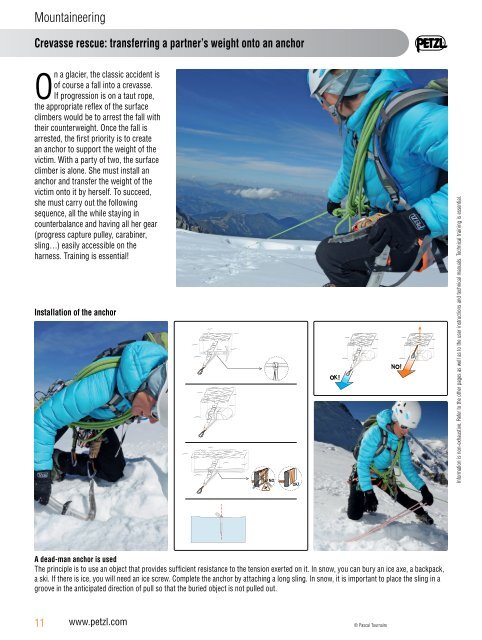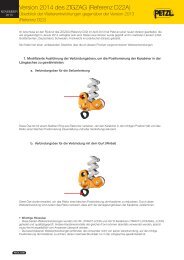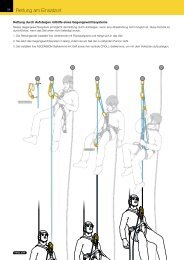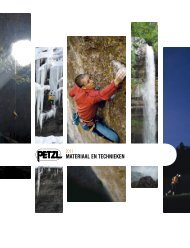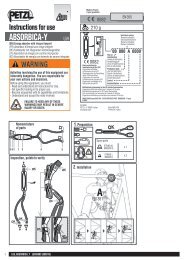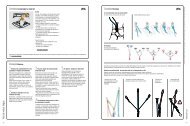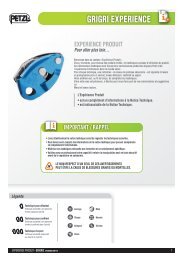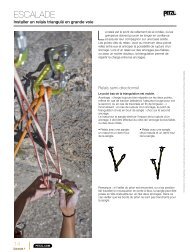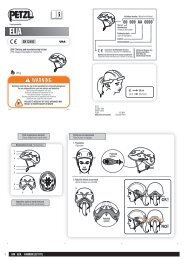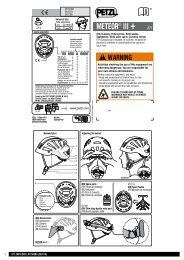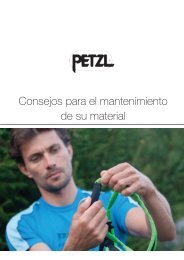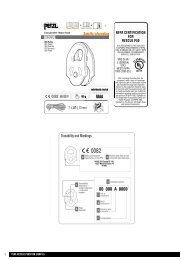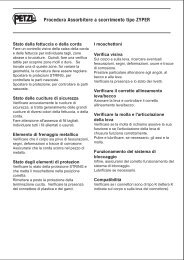You also want an ePaper? Increase the reach of your titles
YUMPU automatically turns print PDFs into web optimized ePapers that Google loves.
Mountaineering<br />
Crevasse rescue: transferring a partner’s weight onto an anchor<br />
On a glacier, the classic accident is<br />
of course a fall into a crevasse.<br />
If progression is on a taut rope,<br />
the appropriate reflex of the surface<br />
climbers would be to arrest the fall with<br />
their counterweight. Once the fall is<br />
arrested, the first priority is to create<br />
an anchor to support the weight of the<br />
victim. With a party of two, the surface<br />
climber is alone. She must install an<br />
anchor and transfer the weight of the<br />
victim onto it by herself. To succeed,<br />
she must carry out the following<br />
sequence, all the while staying in<br />
counterbalance and having all her gear<br />
(progress capture pulley, carabiner,<br />
sling…) easily accessible on the<br />
harness. Training is essential!<br />
Installation of the anchor<br />
A dead-man anchor is used<br />
The principle is to use an object that provides sufficient resistance to the tension exerted on it. In snow, you can bury an ice axe, a backpack,<br />
a ski. If there is ice, you will need an ice screw. Complete the anchor by attaching a long sling. In snow, it is important to place the sling in a<br />
groove in the anticipated direction of pull so that the buried object is not pulled out.<br />
11<br />
www.petzl.com<br />
mini 50 cm<br />
© Pascal Tournaire<br />
Information is non-exhaustive. Refer to the other pages as well as to the user instructions and technical manuals. Technical training is essential.


